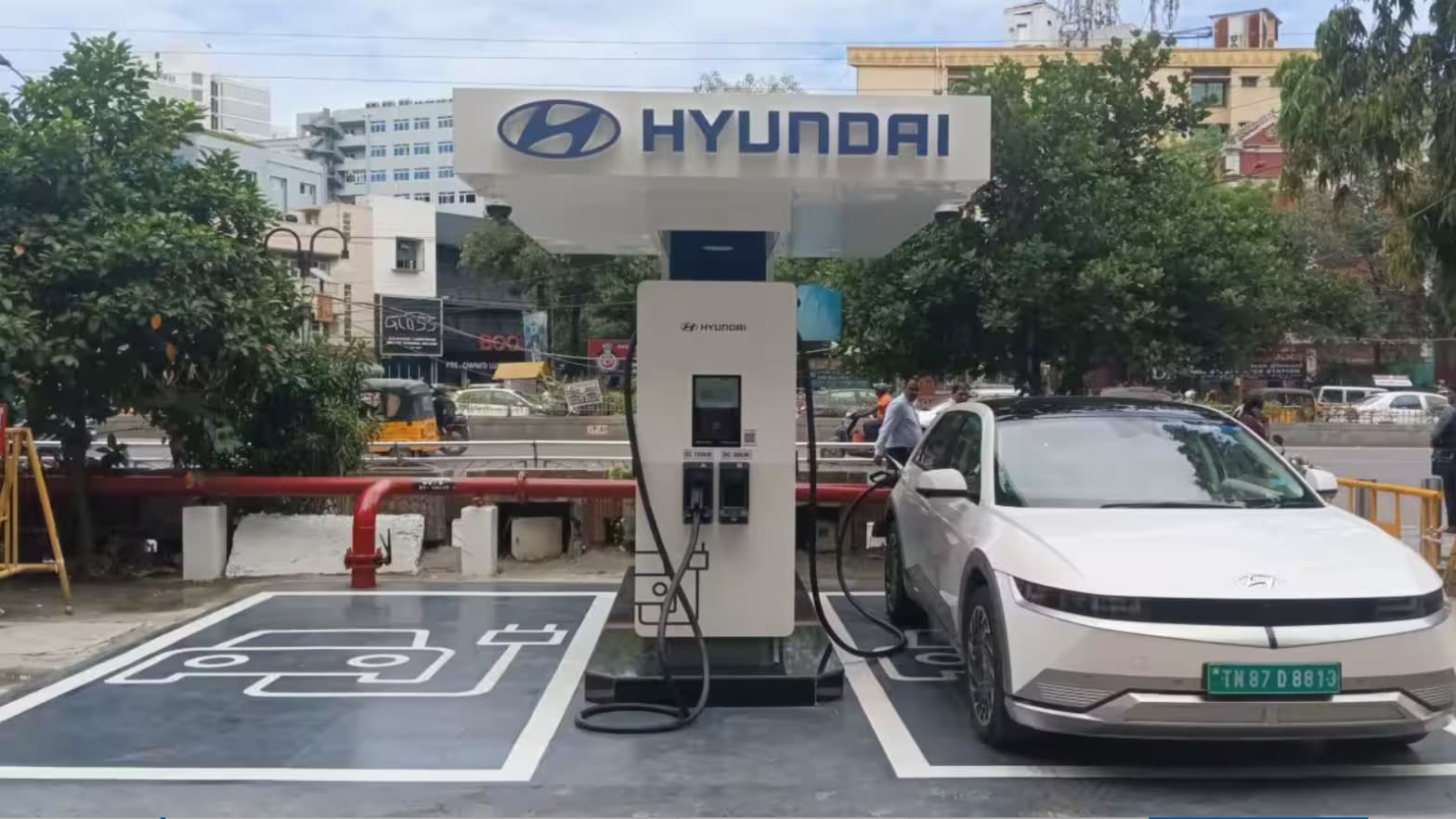The electric vehicles (EVs) market is on track for rapid growth, estimated to become a USD 120 billion market in India by 2030. As a result of this growing demand, the country would need a minimum of 1.32 million charging stations by 2030 to facilitate the rapid adoption of EVs, as per a report by the Confederation of Indian Industry (CII). Alongside the expansion of these stations is a rising opportunity for advertisers to utilise out-of-home (OOH) spots for interactive content.
OOH agencies told Storyboard18 that EV charging stations have a significant potential for outdoor advertising, particularly on highways. EV charging stations are becoming more common on highways and are slowly being integrated with food malls and shopping malls. This in turn, presents a great opportunity for DOOH (digital OOH) advertising using LED screens with audio. As users charge their vehicles, they have ample time — around 30 minutes — to view advertisements on the LED screens at the charging stations.
Read more: BluSmart introduces ‘BluSmart Charge’ App, opens its EV charging service to public
As per various estimates, there would be around 1000 DOOH screens across EV charging stations in India at present. This market is estimated to be around Rs 100 crore and is expected to grow 20-30 percent annually. DOOH ad rates at these stations is around Rs 10,000-15,000 per month per screen for an ad to be played, with some 64 repetitions per day.
Overall, as per Pitch Madison report, the total OOH ad spends breached the Rs 4,000 crore level to reach Rs 4,140 crore last year, which is nearly double that of Rs 2,178 crore recorded in 2021. In this, DOOH stands somewhere close to Rs 1000 crore.
“Pricing for advertising spots at EV charging stations will be comparable to DOOH prices. With a minimum waiting time of 30 minutes per user, there is a strong potential to attract good advertisers due to the high engagement. Although the number of charging stations is currently limited, as they proliferate, the demand for advertising space and pricing will increase,” said Rajesh Radhakrishnan, CMO and Co-Founder of Vritti iMedia.
Read more: Global EV sales jump 18 percent in Q1 2024 on PHEV momentum
Future possibilities include barter arrangements where consumers who listen to advertisements at charging stations receive discounts or free charging as offers. For example, a coupon code could be shared during the advertisement, allowing the consumer to charge for free. This model could turn charging stations into a significant revenue stream.
Vritti iMedia currently is in charge of digital passenger information systems (PIS) across 575 State Transport bus stations in 8 states and is considering deploying charging stations at bus stations which could be integrated with the PIS, allowing users to listen to audio jingles while charging their bikes.
“This setup can benefit both the charging stations and the brands advertising on the PIS at bus stations. Additionally, we can explore offering entertainment or infotainment content to engage users during their wait,” he shared.
While Admatazz has not yet seen a high demand by clients or prospective clients to explore OOH opportunities at charging stations, the company’s leadership is confident that “it’s a matter of time”.
Because of their strategic placements and capacity to employ digital displays for dynamic, targeted advertising, EV charging stations present a massive opportunity for outdoor advertising. “Especially since OOH is also getting contextual with its creatives. This is more or less the digital-first audience and tech-savvy TG, so targeting them via EV campaigns will help brands,” said Yash Chandiramani, Founder and Chief Strategist, Admatazz.
Read more: TVS lines up new EV launches in upcoming quarters, appealing to various customer segments
The OOH industry has seen a massive change with the introduction of new technology and newer mediums, and EV charging stations bring a combination of these two. FMCG, D2C brands, pharma brands, automobile and education brands will find it very helpful, said experts. Also, EV charging stations are often located in highly visible areas such as mall parking lots, restaurants, hotels, and other public places—this makes them prime real estate for advertisers looking to reach an audience with a high dwell time.
It’s still at an early stage in India, and good infrastructure for the outdoors is not available as of now, but it can become a valuable touch point for advertisers, said Amarjeet Hudda, COO of Laqshya Media.
“While we haven’t personally interacted with clients specifically regarding outdoor advertising on EV charging stations, it’s certainly a topic of interest in the advertising industry. The popularity of EVs is on the rise, and we anticipate more advertisers exploring this innovative advertising channel in the near future,” he added.
Read more: Rolls-Royce launches its luxury EV Spectre in India at a starting price of Rs. 7.5 crore
EV charging stations can generate additional revenue in the future through branding, sponsorships and partnerships as well. But what needs to be first addressed here is that all approval and guidelines concerning the ad placements and installations are in place.
After the tragic May 2024 incident in Mumbai, which involved several fatalities due to a collapsed illegal ad hoarding, the industry bodies have picked up pace and the main challenge would be to ensure that everything is in order, concluded Chandiramani.
